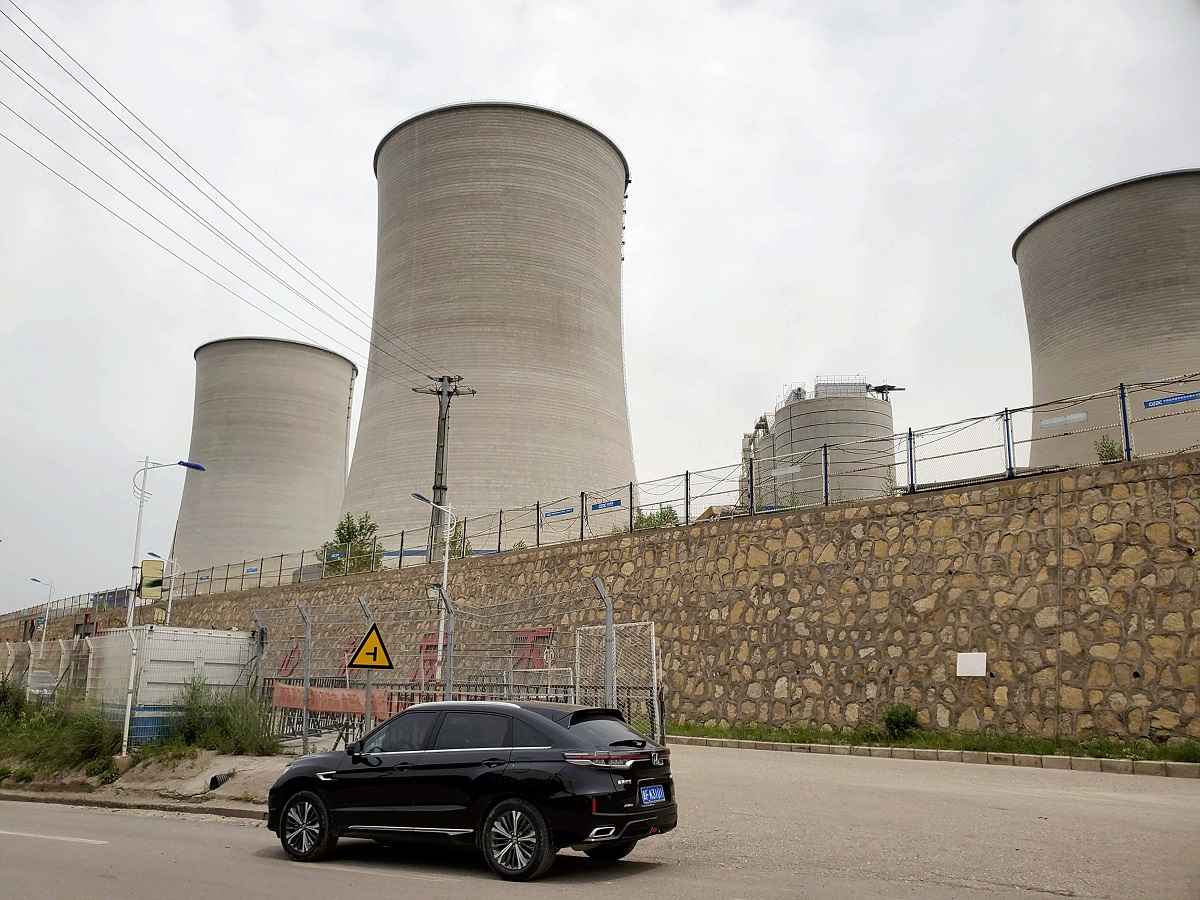Coal Production Surging in China, Endangering Global Decarbonization Efforts; Country’s Coal Production Over 50% of Global Output

A coal-fired thermal power plant is seen in Shanxi Province, China’s largest coal-producing region.
6:00 JST, June 4, 2024
BEIJING — As China increases its production and imports of coal, its surge in coal production could negate other countries’ decarbonization efforts. China is the world’s largest carbon dioxide producer. In 2023, its coal production and imports reached record highs, and much of that is used for coal-fired power generation to meet growing electricity demand.
The Economic Information Daily, a Chinese economic newspaper, reported Friday about an 11-meter-high pile of coal on a roughly 8,000-square-meter site near a plant of major power company State Power Investment Corporation in Anhui Province, China. The total coal the company stores is reportedly about 16 million tons.
China’s National Energy Administration estimates that the maximum power demand this summer will increase by over 100 million kilowatts compared to last year. China likely intends to eliminate concerns over the supply-demand balance of electricity by displaying the company’s coal stockpiles.
According to China’s National Bureau of Statistics and other sources, the country’s coal output rose to a record high of 4.71 billion tons in 2023, up 3% from the previous year. China’s coal production hit record highs for three consecutive years, accounting for over 50% of the global output. Furthermore, China’s coal imports increased, surging 62% yearly to 470 million tons in 2023.
Most of the fuel is used to generate coal-fired power. The Chinese government is believed to have approved an extra 114 gigawatts (GW) of coal power capacity in 2023. The additional capacity alone is twice as much as Japan’s total capacity of 53 GW.
China experienced severe power shortages and turmoil in the summer of 2021, which explains its coal production increase.
In his speech at the U.N. General Assembly in 2020, Chinese President Xi Jinping declared that China aimed to have CO2 emissions peak before 2030. In response to his speech, coal supply declined in China and its price surged several times over the year. Many local governments reduced their electricity supply to achieve their allotted reduction targets without securing alternative power sources.
Energy security is another reason behind coal production. Different from crude oil and natural gas, which China depends on from imports, the country is almost self-sufficient in terms of coal. Although it has increased wind and solar power generation, these power sources depend on weather conditions. As a result, coal is China’s mainstay power source to secure a stable supply of electricity. Under these circumstances, there will be a rush of coal-fired thermal power plant construction until 2030, according to a source in the energy industry. Some expect that China’s coal power capacity will increase by more than 20% in the future.
China’s move goes against the global trend toward decarbonization. The COP 28 U.N. climate conference agreed in December 2023 that the world needs to reduce greenhouse gas emissions by 43% from 2019 levels by 2030. To achieve this goal, China’s efforts are essential as the country produces about 30% of global CO2 emissions.
“China has not withdrawn from anti-global warming measures, but it is increasingly prioritizing a cheap and stable supply of electricity,” said Taishi Sugiyama, a research director at the Canon Institute for Global Studies.
"World" POPULAR ARTICLE
-

8 Japanese Nationals Stranded on Indonesia’s Sumatra Island
-

U.S. Senate Resolution Backs Japan, Condemns China’s Pressure
-

China to Impose Sanctions on Shigeru Iwasaki, Former Head of Japan’s Self-Defense Forces, Who Serves as Adviser to Taiwan’s Executive Branch
-

South Korea’s Top Court Dismisses Nippon Steel Appeal in Lawsuit over Requisitioned Worker
-

75% of Myanmar People Reject Army’s Political Involvement, According to Survey Conducted by Aid Organization
JN ACCESS RANKING
-

Tokyo Economic Security Forum to Hold Inaugural Meeting Amid Tense Global Environment
-

Keidanren Chairman Yoshinobu Tsutsui Visits Kashiwazaki-Kariwa Nuclear Power Plant; Inspects New Emergency Safety System
-

Imports of Rare Earths from China Facing Delays, May Be Caused by Deterioration of Japan-China Relations
-

University of Tokyo Professor Discusses Japanese Economic Security in Interview Ahead of Forum
-

Japan Pulls out of Vietnam Nuclear Project, Complicating Hanoi’s Power Plans





















